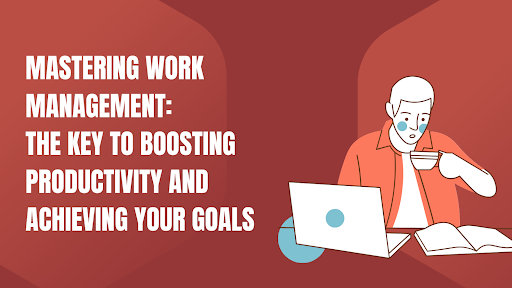Probate is the legal process of validating a deceased person’s Will and distributing their estate per their wishes. It involves identifying and gathering the deceased person’s assets, paying off any debts or taxes owed, and distributing the remaining assets to the heirs or beneficiaries named in the deceased person’s Will or determined by law. Does that sound like a lot? Probate can be a complex and time-consuming process, and people make several common mistakes when going through it. To help you out, here are some expert tips from our professional probate consultants on avoiding these mistakes.
Not Having a Will in Place
Not having a will or trust in place is a common probate mistake that can have significant consequences for your loved ones after your death.
- If you pass away without a will or trust, your assets will be distributed according to state law, which may not reflect your wishes or benefit your intended beneficiaries.
- Probate courts will appoint an executor or administrator to oversee the distribution of your assets, which can be time-consuming and expensive.
- Without a will or trust, your estate may also be subject to estate taxes, which can reduce the amount of assets available for distribution to your beneficiaries.
- Additionally, without a will or trust, you will not be able to name guardians for your minor children, leaving it up to the court to determine who will care for them. This can be a difficult and emotional decision for the court and may not reflect your wishes.
- Also, if you don’t name an executor in your Will, a Letter of Administration application must be initiated to assign an administrator for your estate.
To avoid these consequences, working with an estate planning attorney to create a will that best reflects your wishes is essential.
Failing to Keep Your Beneficiary Designation Up to Date
Failing to keep beneficiary designations up to date is another common probate mistake that can have significant consequences. Beneficiary designations are typically used for assets such as life insurance policies, retirement accounts, and bank accounts that come under the category “non-probate assets”. When you designate a beneficiary for these assets, they will receive the assets directly upon your death without going through probate.
However, if you fail to keep these beneficiary designations up to date, the assets may go to the wrong person or, in some cases, be subject to probate. For example, suppose you named your ex-spouse as the beneficiary of your life insurance policy and never updated it after your divorce. In that case, your ex-spouse may receive the policy proceeds instead of your current spouse or children. That’s why as probate consultants, we recommend you update all your beneficiary designations for non-probate assets and ensure they don’t fall into undesirable hands after your death.
Not Communicating With Your Family Members
Not communicating with family members about your estate plan can lead to confusion, conflict, and potential legal challenges after your death. Discussing your estate plan with your family members and loved ones is vital to ensure that everyone knows your wishes and understands how your assets will be distributed.
If you do not communicate your estate plan with your family members, they may have unrealistic expectations about their inheritance or be surprised by the distribution of assets. This can lead to resentment, hurt feelings, and potential legal challenges, which can prolong the probate process and increase expenses.
Not communicating with family members can also lead to misunderstandings and disputes about your intentions. For example, suppose you do not make your wishes clear about how your assets should be distributed. In that case, family members may disagree about dividing the assets, leading to legal challenges and potential court involvement. So, make sure to convey your wishes to your loved ones beforehand to avoid challenges of any similar nature after your death.
Failing to Identify and Gather all Assets
Failing to identify and gather all assets is another common probate mistake that one should avoid for a smooth probate procedure. It is essential to have a comprehensive understanding of your assets to ensure that they are properly accounted for in your estate plan.
If you fail to identify and gather all of your assets, some assets may be left out of your estate plan, resulting in unintended consequences. For example, if you forget to include a valuable piece of property in your estate plan, it may not be distributed according to your wishes or may be subject to legal challenges. Also, executors and administrators have a legal duty to locate and value all of the assets in the estate, and if assets are not properly identified and gathered, this can lead to delays and increased expenses.
To avoid this, it is important to work with an estate planning attorney to identify your assets and ensure that they are appropriately accounted for in your estate plan.
Not Paying Off Debts and Taxes Before Distributing Assets
When an individual dies, their debts and taxes must be paid from their estate before any assets can be distributed to heirs or beneficiaries. If debts and taxes are not properly addressed before distributing assets, it can result in legal challenges and financial consequences for the executor or administrator of the estate.
If the executor or administrator distributes assets before paying off debts and taxes, they can be held personally liable for unpaid debts or taxes. This can result in legal action against the executor or administrator and can also result in the assets being seized to pay off the outstanding debts or taxes.
Working with an estate planning attorney and a certified public accountant (CPA) to identify and address any outstanding debts and taxes before distributing assets is essential to avoid these consequences. This includes personal debts such as credit card debt or mortgages and estate taxes and income taxes that the estate may owe.
To Sum Up
These are common mistakes to avoid if you wish to ensure a smooth distribution of your estate after your death.
As expert probate consultants, we understand how confusing a probate application might get if you don’t have the basic know-how. But you don’t have to worry because our team is there to deliver the required assistance. You can connect with our team at Probate Consultants and find comprehensive assistance with your probate or letter of administration application.












